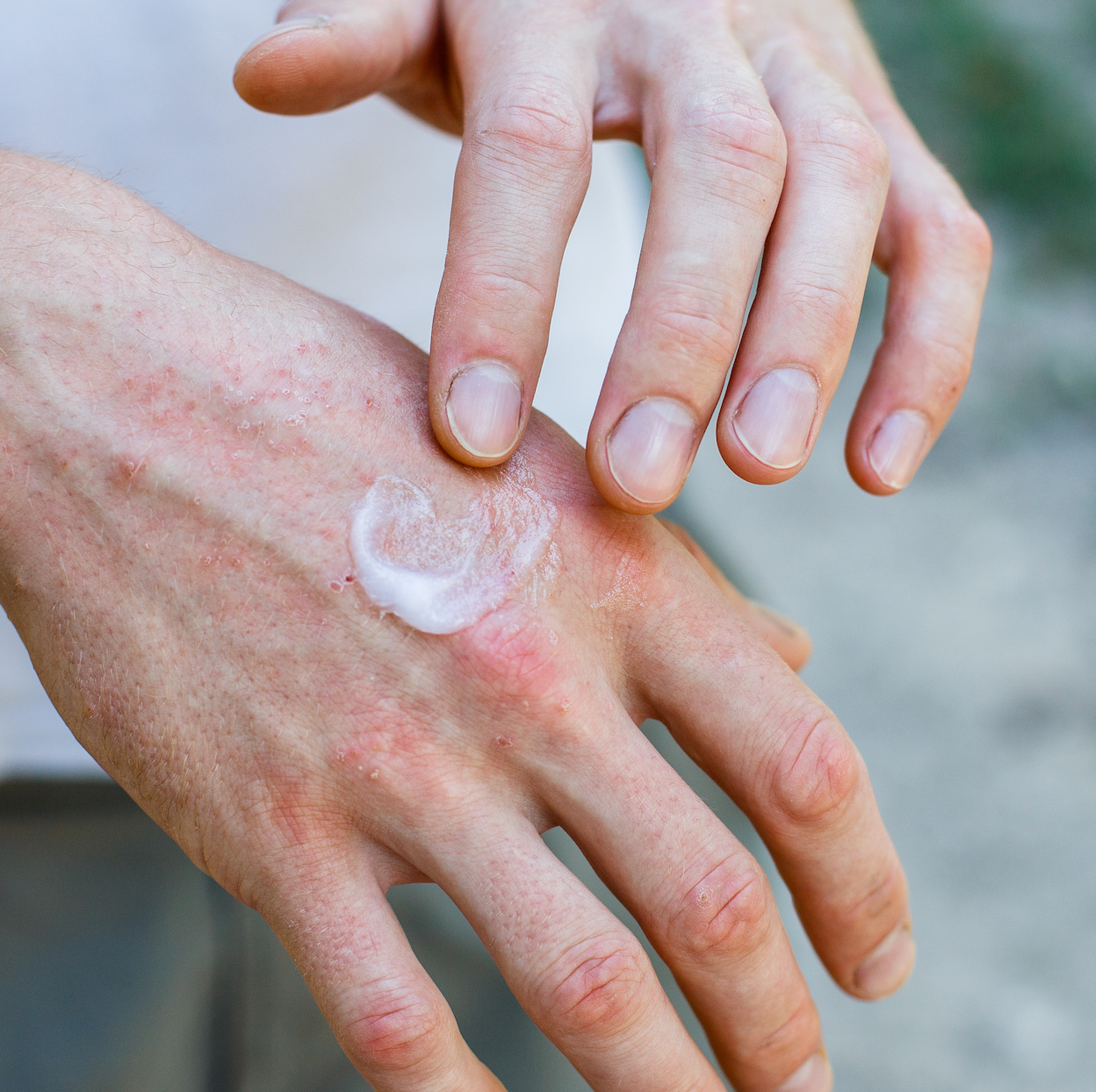News
Article
Qingpeng Ointment Improves Pain, Swelling in Gouty Arthritis
Author(s):
The group receiving Qingpeng ointment showed significant differences compared to the control group in VAS scores, joint mobility, and disappearance rate after treatment for acute gouty arthritis.
Credit: Adobe Stock/Ольга Тернавская

Tibetan Qingpeng (QPO) ointment demonstrated positive effects, including alleviating pain, improving joint mobility, and reducing swelling, without notable adverse events, in patients with acute gouty arthritis, according to a study published in BMC Complementary Medicine and Therapies.1
QPO, an external product that gained approval from the China National Medical Products Administration in 1997, is commonly used in conditions in which joint pain and swelling are common, such as rheumatoid arthritis, osteoarthritis, and gout.2
“Several previous clinical trials on acute gouty arthritis have suggested that adding QPO to nonsteroidal anti-inflammatory drugs (NSAIDs) can improve the effects of relieving joint pain and swelling, and enhancing joint mobility,” wrote a group of international investigators. “However, these studies have some methodological deficiencies, such as inadequate beforehand sample size estimation, small sample sizes in general, lack of reported appropriate methods for generating random sequences, and absence of blinding for doctors and patients.”
The randomized, double-blind, placebo-controlled trial recruited adult patients from 3 clinical centers in China who were diagnosed with acute gouty arthritis. Eligible subjects exhibited joint pain categorized as ≥ 3, determined by a visual analog scale (VAS) from 0 to 10. Subjects were randomly assigned to receive either QPO or placebo and were treated twice a day for 7 consecutive days. They were instructed by investigators to ensure it covered the affected joint area with .3—.5 cm thickness. For patients experiencing intolerable pain, participants were able to supplement with diclofenac sodium sustained-release tablets as a rescue medicine.
The primary endpoints were joint pain and swelling, and secondary endpoints included C-reactive protein levels, serum uric acid levels, joint mobility, redness, and the amount of remaining rescue medicine. Adverse events were also accounted for.
Of the 203 patients included in the intervention, 102 were placed in the QPO cohort and 101 received the placebo. The groups exhibited comparable baseline demographics and disease characteristics.
Significant differences in VAS scores were observed between the intervention group and controls (1.75 [0, 3.00] vs 2.0 [1.00, 3.50, respectively; P = .038), changes in VAS (5.00 [3.00, 6.00] vs 4.00 [2.00, 6.00], respectively; P = .036), and disappearance rate (26.47% vs 15.84%, respectively; P = .046) post-treatment. Further, the QPO cohort reported statistically significant mobility improvement when compared with the placebo cohort (1.0 [1.0, 2.0] vs 1.0 [0, 1.0], respectively; P = .004). Improvements in VAS-swelling at the end of the intervention were significantly better in the QPO cohort when compared with controls (1.00 [0, 2.30] vs 2.00 [.70, 3.00], respectively; P = .032).
However, significant differences were not observed in other secondary outcomes, including redness and the remaining rescue medication amount.
Regarding adverse events, 5 patients, of which 4 (3.92%) were receiving QPO, had encountered mild adverse events. The most common adverse events were related to skin irritation, such as rash, itching, and redness, and all were resolved after a dosage reduction or discontinuation.
Investigators noted the inclusion of only the placebo and QPO as the control and intervention as a limitation of the study as they reasoned it might be difficult to rely solely on an ointment during a period of severe joint pain. Despite allowing for rescue medication as needed, participant compliance may have been affected. Additionally, the study relied on patient-reported data, which may have led to inaccuracies in the outcome assessment.
“The results suggest that QPO could serve as a safe treatment option for alleviating joint pain, swelling, and dysfunction in patients with AGA,” investigators concluded.
References
- Shang, Yx., Wei, Sf., Yang, Kp. et al. Efficacy of Qingpeng ointment (a Tibetan medicine) for acute gouty arthritis: a multi-center, randomized, double-blind, placebo-controlled trial. BMC Complement Med Ther 24, 21 (2024). https://doi.org/10.1186/s12906-023-04328-7
- Wang JB, Xie RA, Jiang XB, Pan L, Liang HD. Clinical investigation on the treatment of acute gouty arthritis with Qingpeng paste. Chin J Orthopa Trauma. 2006;19(12):755–6.





